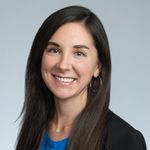Add-On ESL License: A Band-Aid, Not a Cure

Add-On ESL License: A Band-Aid, Not a Cure
One morning in early August, I was enjoying my vacation when my husband thrust his laptop into my lap. Since my husband, a high-school math teacher, usually lets his emails marinate over the summer, I knew it must be important. The message was from his superintendent to all district faculty, staff, and parents. With less than a month until the start of school, she still had over 70 positions to fill.
When, back in Boston, I opened my own inbox, I was greeted with a message from a teacher friend, asking whether I had seen a Boston 25 News article about teacher vacancies in Boston Public Schools (BPS). A few weeks later, on September 1, the Boston Herald reported that BPS, was still looking to hire 217 teachers with only a week before the first day of school.
As a former BPS teacher and now a teacher educator who prepares candidates to work with multilingual students, I find the situation in BPS particularly unsettling.
Approximately 30 percent of students in BPS are classified as English learners (ELs): multilingual students who are deemed to require additional language supports to access the general curriculum. If you teach in BPS, you will probably have students on your roster who are currently or formerly designated as ELs.
But filling open positions is only half the battle. The bigger challenge is finding teachers adequately prepared to support students who are simultaneously learning content and developing English skills.
One way to prepare content teachers to work with ELs is through dual licensure in English as a Second Language (ESL). In Massachusetts, practicing teachers can add an initial ESL license to their content-area license by completing a 150-hour internship and passing the ESL Massachusetts Test for Educator Licensure (MTEL).
Sounds pretty great, right? Even if you hire teachers who are not trained to work with ELs, you can get them certified in ESL relatively efficiently.
Yes, studies have shown that certified teachers provide more effective instruction to designated ELs than uncertified teachers. And the add-on license can help to increase the pool of certified ESL teachers. This, in itself, is a big deal. Students classified as ELs are more likely than their monolingual peers to be taught by unqualified educators.
The add-on license may also help administrators to fill positions without hiring additional teachers. For instance, a high-school science teacher with the add-on license could teach four sections of biology and one section of ESL. Again, this is a big deal. ESL is a chronic teacher shortage area in Massachusetts.
So, what’s the problem? For one thing, certification is not the same as expertise.
The primary downside is that practicing teachers, unlike pre-service teachers, do not have to take any coursework to earn the add-on ESL license. To effectively support ELs in the content areas, teachers need to understand the linguistic demands of their discipline. They also need to know how to use students’ other languages as resources, and how to help students build thematic conceptual and vocabulary knowledge. Passing the ESL MTEL does not necessarily signify that a teacher is skilled at any of that.
Moreover, because the add-on license is relatively easy to obtain, it may perpetuate the stereotype that teaching designated ELs is “just good teaching.” It’s also unfair—and detrimental to kids— to force teachers to teach language in their content areas when they have not been given opportunities to build confidence in their skills to do so.
Let me be clear: I do not want to scrap the add-on license. A teacher who has passed the ESL MTEL and has had some experience working with ELs is at least aware of the challenges these students face. That’s a start.
However, earning the add-on ESL license without receiving supplementary professional development (PD) is like using a Band-Aid without Neosporin. It just doesn’t get the job done. Cuts need Neosporin. Teachers need PD.
Study after study after study has shown that, to effectively support designated ELs, teachers need sustained, practice-embedded training where they can analyze and apply strategies specific to multilingual students. Among other things, they also need opportunities to critically examine their ideologies about language, culture, and privilege.
As someone who provides PD, I recognize how challenging it is to deliver high-quality training, especially when staffing is an issue. Still, there are things that schools and districts can do to support teachers who have recently earned the add-on ESL license.
For instance, they can give new dually licensed teachers time during regularly scheduled PD to plan with experienced ESL specialists or veteran dual-certified content teachers. Additionally, the WIDA Consortium and Center for Applied Linguistics offer a variety of virtual workshops and webinars focused on language standards, instructional strategies, and family engagement. The Center for Learning in Practice has trainings for teachers of refugees. Newly minted ESL-licensed teachers could access these opportunities on their own and then debrief with colleagues during common planning time or department meetings. Perhaps schools could provide PD days or compensation to these teachers, to incentivize structured reflection.
I hope that, by the time this post is published, every teacher vacancy in BPS has been filled. Even more so, I hope that the teachers who are hired are given the support they need to teach all their students.

Jennifer Altavilla-Giordano is a lecturer and program director for TESOL & Bilingual Education (Licensure) at BU Wheelock. Her research focuses on professional development, pre-service training, and instructional coaching for teachers who work with students classified as English learners.